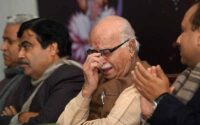DIGITALIZATION OF COURT PROCEEDINGS: – A NEW WAY TO INDIAN JUDICIARY
This Article has been written by Bhavya Verma,studying LL.B. in JEMTEC, School of law and Curated by Rasveen Kaur Kapoor of Indore Institute of Law.
Undoubtedly, Covid-19, that caught hold of the entire planet, stunned the litigants, lawyers, judges and justice administrators consummately. The outbreak of the novel strain of Coronavirus (Covid-19) recalibrated the Indian Judiciary, and proved that recalibration is hopefully possible if we have the political will and a course of action to digitalize the courts, from roots up. It served to be an opportunity in crisis. Also, a renowned British author, Richard Susskind, anticipated the inevitability of electronic courts in the years ahead.
Though, digitalization of court proceedings is widely accepted in the Indian Courts due to Covid-19 pandemic but long term application of conducting court proceedings via video conferencing may have some challenges.
For e-filing and hearing video conferencing, recently the honorable Supreme Court issued guidelines regards Standard Operating Procedure (SOP) for High Courts and District Courts which provides the link to detailed e-filing procedure that eliminates the need for clerks or counsels to physically approach the filing counter. In the wake of the guidelines and SOP issued by the Supreme Court, various High Courts have adopted a conforming procedure.
The advocates and litigants are gradually familiarizing themselves with the video conferencing apps such as Jitsi Meet and Vidyo applications. Only those matters which are deemed to be of extreme importance, designated by the Registrar were to be put up for hearing which included bail matters. On 18th April 2020, the honorable Supreme Court expanded the types of matters to be taken up for hearings by the consent of the parties thus miniscule matters pertaining to family laws and death penalty which can be dealt by video conferencing may be taken up by the consent of the parties.
The biggest hurdle in the full-fledged digitalization of the courts is that the proceedings will not be open for the public to witness as being held in camera or virtually which is against the requirements of natural justice. Also, the kinds of matters which can be suitably adjudicated by the courts are limited.
Section 3 of the Indian Evidence Act, 1872 defines the term evidence which the court permits or requires including electronic documents. In the case of Umar Abdul Sakoor Sorathia v. Intelligence Officer, MC Bureau, the honorable Supreme Court allowed the identification via photograph but such identification might not constitute substantive evidence. Also, in the case of Bishwanath Prasad v. Dwarka Prasad the apex court declared that the admissibility regards the evidence has to be substantive evidence of the fact.
Section 17 of the Indian Evidence Act, 1872 defines admission as a statement oral or documentary or contained in electronic form. In the case of Income Tax Officer v. Mangat Ram Norata Ram the honorable Supreme Court held that the admission implied by conduct is strong and best evidence against the maker but he is at liberty to prove that such admission was mistaken or untrue. Also, in the matter of Joshna Gouda Brundabande held that for the admission to be valid such admission should be clear and unambiguous.
Under section 62 of the Indian Evidence Act, 1872 the documents submitted as original are considered primary evidence and any copy without physical submission would be secondary evidence.
Under section 138 of the Indian Evidence Act, 1872 the examination of the witnesses has to be done in a free and fair manner without undue influence and coercion but through video conferencing the independence of witness’ testimony can be questioned. The complexities of recording and admission of the evidences cannot be held in video conferencing as no application or cloud has yet been designated for recording and digitally storing the information in a neutral space, in tune with the requirements under the Indian Evidence Act, 1872. For expanding the ambit of video conferencing in criminal trials and video conferencing there would be a dire need to expand the infrastructure so as to facilitate recording of witness’ testimony at locations that can be certified as being protected against undue pressure or coercion. Inspection of the evidences will continue to pose a challenge.
The recording of cross examinations and examination in chief, especially in criminal matters becomes challenging for the proceedings held via video conferencing. Recording of evidence in criminal trials often requires frequent communication with the client and observing the body language and mannerism of the witnesses. The right to cross examination in criminal matters is a crucial right and integral to the concept of natural justice and fair trial.
All aspects of digitized court proceedings shall encapsulate the following:
- Meet the requirements under the Indian Evidence Act, 1872
- Should not be violative of the procedure established by law enshrined under Article 21 of the Constitution of India.
- Should not put litigants under any financial burden.
- Civil Procedure Code, Criminal Procedure Code and the Information Technology Act should be amended to enable a comprehensive digitization of court procedures.
- Adherence to the principles of natural justice, good conscience and equity.


